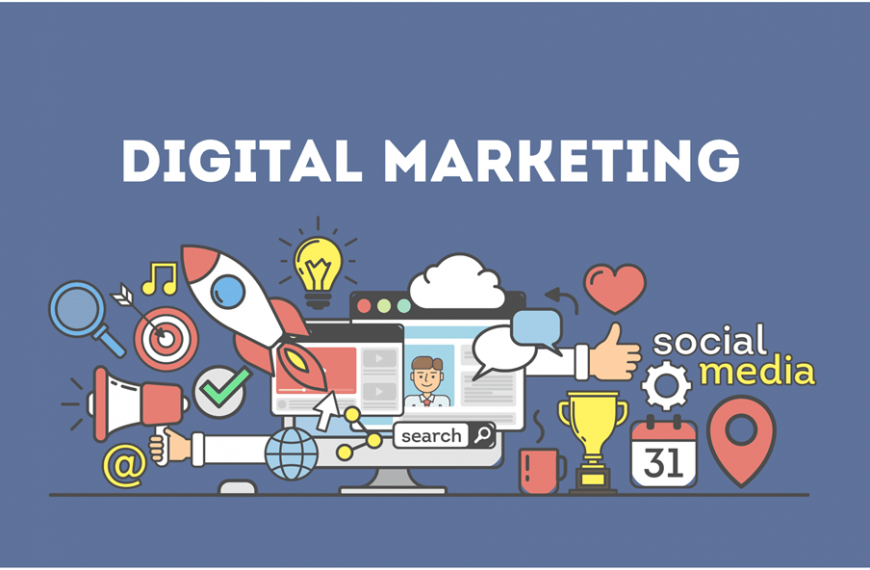In today’s dynamic digital landscape, IT staff augmentation presents a unique opportunity for businesses to accelerate growth by leveraging external talent and expertise.
Temporarily contracting skilled IT professionals enables companies to expand their capabilities and capacity without committing to permanent hires. As talent multipliers, augmented IT staff can provide specialized skills, fresher perspectives, and surge support for key projects – thus catalyzing innovation, reducing time-to-market, and enhancing cost efficiency.
Whether onshore, offshore, or nearshore, the right IT talent integration model lets organizations scale swiftly to capitalize on new opportunities.
This blog explores how IT staff augmentation services as a launchpad for business growth amidst rapidly evolving user needs and technologies. Supported by real-world examples, it offers actionable guidelines for effectively tapping into on-demand IT talent and overcoming implementation challenges.
Let’s understand how talent multipliers hold the key to unlocking transformative outcomes.
Understanding IT Staff Augmentation
IT staff augmentation refers to temporarily contracting qualified IT professionals to supplement the existing in-house technical talent for projects requiring specialized skills or additional bandwidth. Unlike permanent hiring, it provides flexible skill sets and capacity without long-term overhead costs.
There are three predominant models for IT staff augmentation services:
- Onshore augmentation involves contracting talent from within the organization’s own country. This allows for proximity, cultural alignment, and ease of in-person collaboration.
- Offshore augmentation leverages IT expertise from overseas locations to benefit from lower labor costs and around-the-clock workflows.
- Nearshore augmentation strikes a balance by engaging technical professionals from nearby regions for time zone overlap and quick access at affordable pricing.
IT staff augmentation delivers tangible ROI as a proactive workforce management solution. It empowers businesses to achieve better outcomes by optimizing their IT talent mix through on-demand skills rather than being limited by fixed headcount capacities. The external talent infusion accelerates capability development to meet evolving market needs.
Talent Multipliers in IT Staff Augmentation
Talent multipliers in IT staff augmentation refer to contracted technical specialists who can exponentially expand the expertise and productivity of an organization’s core in-house IT employees.
They act as force amplifiers by injecting niche capabilities and additional bandwidth, empowering more significant outcomes.
Leading top IT staff augmentation companies provide access to extensive talent pools spanning hundreds of thousands of highly qualified IT professionals.
Based on each project’s tech stack priorities and workflow integration needs, they enable prompt onboarding of elite talent multipliers with specialized competencies.
The infusion of these force amplifiers taps into diverse perspectives to catalyze innovation. It also creates knowledge transfer opportunities through peer learning and collaboration to upskill permanent teams over time.
Freed from talent and capacity constraints, organizations can undertake more ambitious IT modernization initiatives to engineer cutting-edge digital experiences and bolster competitive advantage.
In essence, the talent multiplier effect unlocked by prudent benefits of staff augmentation services allows enterprises to progress further and faster – by expanding the horizons of what’s feasible with existing headcount budgets.
Key Considerations for Effective IT Staff Augmentation
Realizing the full growth potential of IT staff augmentation requires thoughtful orchestration across people, processes, and technologies. Some key considerations include:
- Identifying the Right Skills: Prioritize technical competencies needed to accomplish specific project goals. Tap into augmentation partners with access to multi-skilled talent spanning leading-edge capabilities.
- Enabling Integration: Onboard augmented staff swiftly and align with internal teams to enable collaborative execution. Ensure visibility into workstreams and outline decision rights to prevent organizational friction.
- Managing Communication: To share context proactively, facilitate transparency and dialogue across in-house and external talent. Drive clarity on objectives, timelines, and quality benchmarks.
- Evaluating Risks: Assess inherent risks in staff augmentation vs outsourcing, such as knowledge leakage, and define explicit security protocols plus IP protections upfront. Institute robust governance frameworks managed by program managers.
- Defining Clear Scope: Provide detailed documentation on project objectives, requirements, deliverables, timelines, and success metrics to set clear expectations. Conduct periodic reviews to realign based on evolving needs.
- Establishing Cultural Alignment: Factor in communication styles, work ethics, and motivational aspects to facilitate in-house and augmented staff collaboration. Set ground rules upfront.
- Enabling Knowledge Transfer: To share technical skills and domain insights with internal team members build mechanisms for augmented resources through training workshops, design discussions, code reviews, etc.
- Customizing Contracts: Structure flexible engagement models based on project lifecycles rather than fixed durations. Include appropriate notice periods and severance terms aligned to business priorities.
- Tracking Cost Efficiency: Monitor project budgets regularly and optimize resource allocations based on current phase needs to maximize ROI. Benchmark hourly/daily rates to spend competitively.
- Coordinating Task Management: Use collaborative tools to coordinate tasks, issue tracking, code merges, and release approvals between mixed project teams for end-to-end visibility.
As workforce management solutions in India, prudent augmented staffing harmonizes the blend of niche external expertise and internal business intimacy to fuel transformational outcomes.
Realizing Growth Potential
IT staff augmentation serves as a springboard for accelerated business growth in today’s dynamic digital economy by providing on-demand access to expertise. It empowers organizations to:
- Boost Project Scalability: Augment core teams with specialized talents like DevOps engineers, data scientists, or full-stack developers from trusted software development services companies without operational overheads. This talent infusion lets you scale initiatives faster.
- Accelerate Time-to-Value: Stay ahead of the competition by contracting niche skills to prototype and launch advanced capabilities for emerging tech skills rapidly without prolonged hiring cycles.
- Enhance Cost Efficiency: Augmented models provide flexible access to technical skills at economical hourly rates to optimize project ROI, unlike IT staff augmentation vs IT consulting services with inflated day rates billed per consultant.
With careful augmentation planning, forward-looking enterprises can amplify their capability trajectories to unlock transformational outcomes spanning elevated customer experiences, supply chain innovations, data monetization, and beyond!
Challenges and Solutions in IT Staff Augmentation
Realizing the growth potential of IT staff augmentation requires recognizing typical implementation obstacles that can derail outcomes if not managed well:
- Lack of Technical Insights: Engaging with inexperienced augmentation partners can result in misalignments between available talent profiles and project needs – delaying onboarding. Partner with established players like global hire software developers with proven expertise mapping across thousands of tech professionals.
- Integration Failure: Loosely aligned external hires can hurt team productivity through miscommunication and lack of visibility. Hire dedicated software development teams to embed them fully into internal projects and systems.
- Hidden Cost Risks: The lack of fixed price models can result in budget overruns from prolonged augmentations. Institute better project governance, structured sprints, and outcome-based pricing models to maximize predictability.
- Talent Scarcity: Finding experts with specialized capabilities and cultural fit can prolong augmentations with niche digital skills in high demand. Partner with global talent supply chains to access pre-profiled regional talent pools.
- Stakeholder Resistance: Internal teams may perceive augmentations as a threat. Proactively communicate the value of leveraging external skills for growth and productivity. Incentivize collaborative behaviors.
- Process Integration Failures: Without structured onboarding and project integration support, augmented resources struggle to sync with internal tools/workflows. Assign buddies, enable job shadowing, and create shared documentation to bridge onboarding gaps.
- Unclear Objective Setting: When project goals, timelines, and success metrics lack clarity, deliverables risk misalignment. Facilitate alignment workshops and follow agile rituals to establish transparency through regular sync-ups.
- Governance Gaps: The absence of oversight mechanisms like capacity planning, budget controls, and mid-course reviews could inflate costs. Appoint program managers to coordinate governance frameworks.
- Knowledge Leakage: Lack of IP protections can enable unauthorized knowledge transfers externally. Implement stringent security controls and policies safeguarding proprietary assets.
Proactive mitigation planning focused on change management, stakeholder alignment, and phased augmentations is key to a resilient IT augmentation strategy that serves as a launchpad for data-driven growth.
Tips for Effective IT Staff Augmentation
Successful IT staff augmentation requires thoughtful planning and execution. Some proven tips include:
- Evaluate Skills Fit: Clearly define project scope and technical needs. Then, evaluate candidate expertise across must-have capabilities and nice-to-have proficiencies critical for outcomes. This ensures precision talent targeting.
You can even take help of quizzes here. With them, you can assess candidates’ knowledge, problem-solving skills, and critical thinking abilities.
- Enable Visibility: Establish shared online dashboards and tools providing transparency into tasks, issues, and code commitments between in-house talent and augmented resources from trusted software development services companies. Drive collaboration.
- Set Expectations: Facilitate alignment workshops to articulate objectives, quality needs, and timelines and review cadences upfront. Course-correct through regular check-ins to prevent deviation.
- Customize Training: Based on technical complexity, conduct tailored onboarding like design sprints, code walkthroughs, etc., to ramp up productivity faster.
- Foster Inclusion: Incent inclusive behaviors between teams through recognition programs and feedback cycles. This retains institutional knowledge.
Future Trends in IT Staff Augmentation
The IT augmentation landscape is poised for rapid evolution in response to disruptive technological innovations, dynamic talent dynamics, and changing workplace models. Some key trends include:
- Specialization Expansion: Niche partnership models centered around specific high-value skills like AI, cybersecurity, blockchain, etc., will gain prominence over generalist staffing firms. This enables precision targeting of critical emerging capabilities.
- Distributed Delivery: Location barriers are dissipating through virtual collaboration platforms, opening access to worldwide talent with specialized expertise. Global delivery with local coordination will become the norm for 24×7 productivity.
- Outcome-Centric Pricing: Transaction-based staffing models are shifting towards success-based pricing aligned explicitly to business impact like revenue expansion, customer retention, etc. This ties partner ROI to clients’ growth results.
- Talent Empowerment: Beyond just executing defined requirements, augmented resources are voicing fresh perspectives through design thinking sessions to shape solutions. Their wider industry exposure gets tapped better.
- Talent Intelligence Platforms: AI-powered cloud-based tools expedite skills-to-profile matching across global augmentation partner networks for accelerated staffing.
Agility and resilience will be key for enterprises looking to harness external talent multiplier effects through visionary augmentation strategies built around emerging digital trends.
Reimagining What’s Possible with Strategic Augmentation
Today’s terrain is ripe for forward-thinking enterprises to exponentially amplify their digital innovation and workforce capabilities through prudent IT staff augmentation. As validated, external talent multipliers allow organizations to:
- Capitalize on specialized skills to carve out competitive differentiation
- Scale on-demand to accelerate ambitious transformation programs
- Optimize costs by adding heads without inflating overheads
- Mitigate ramp-up risks by bridging internal capability gaps
With prudent augmentation planning and change management, IT leaders can harness the multiplier effect to push the boundaries of what’s feasible for their modernization roadmaps.
So why leave growth opportunities on the table? Connect with leading staff augmentation specialists like ValueCoders to unlock transformative outcomes powered by curated technical talent.









